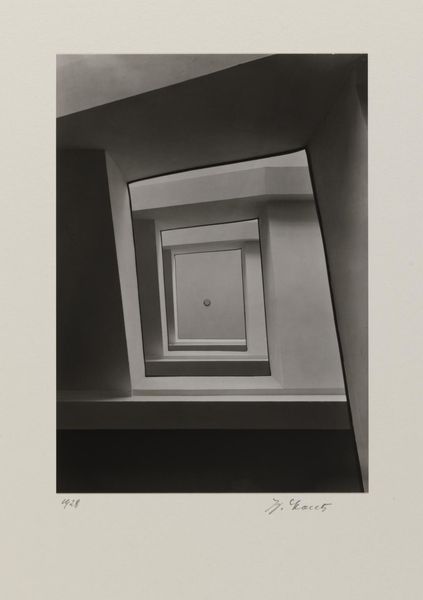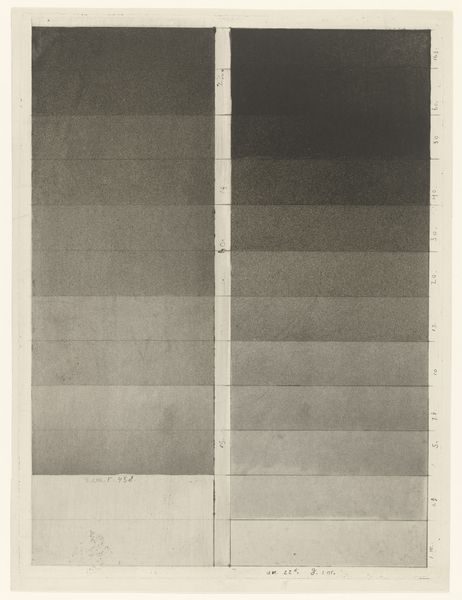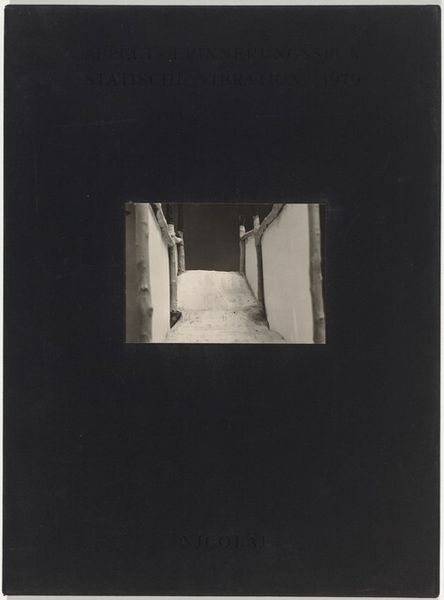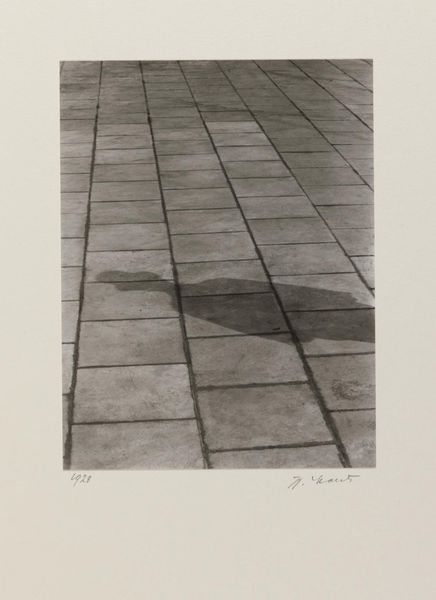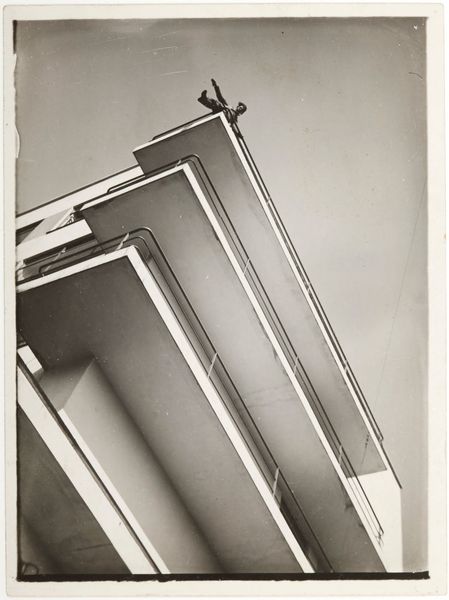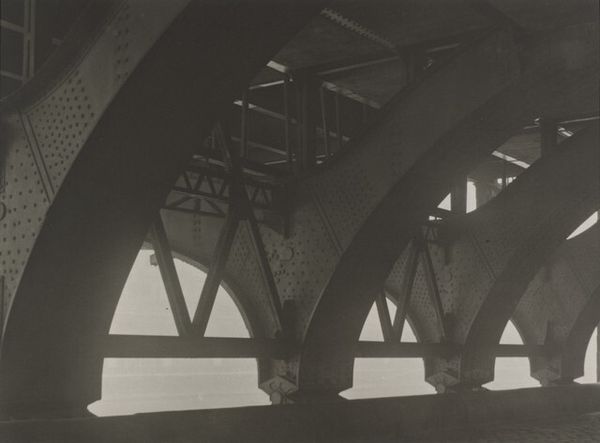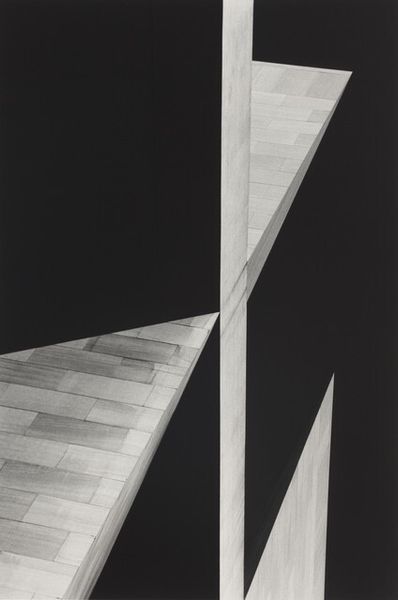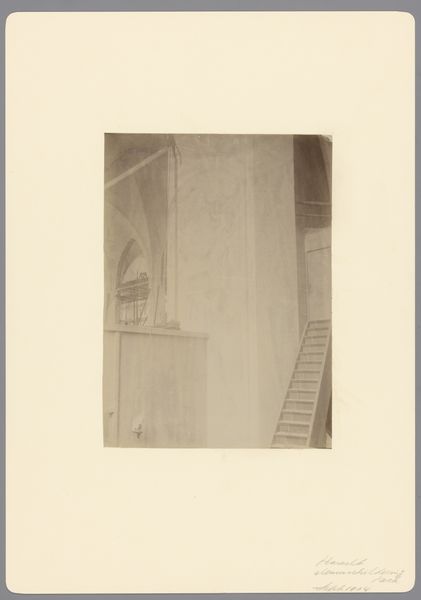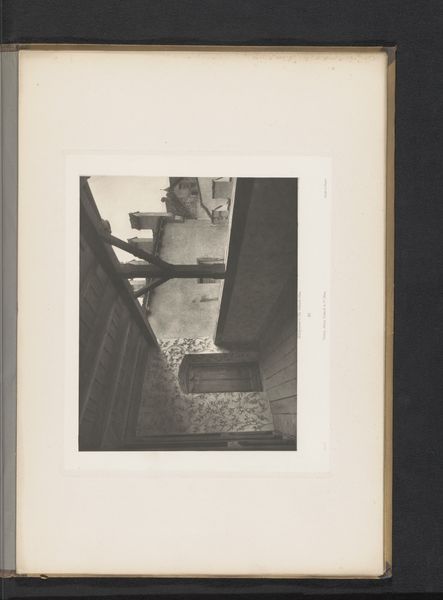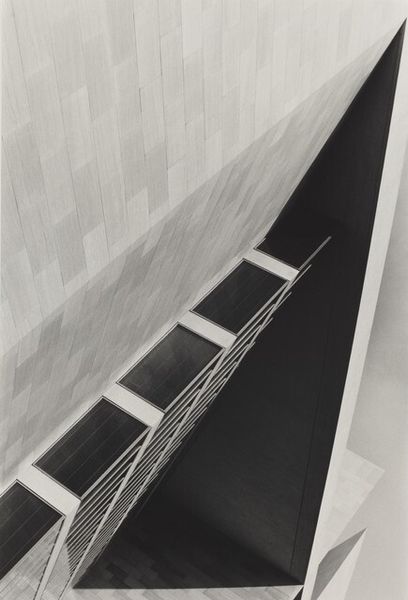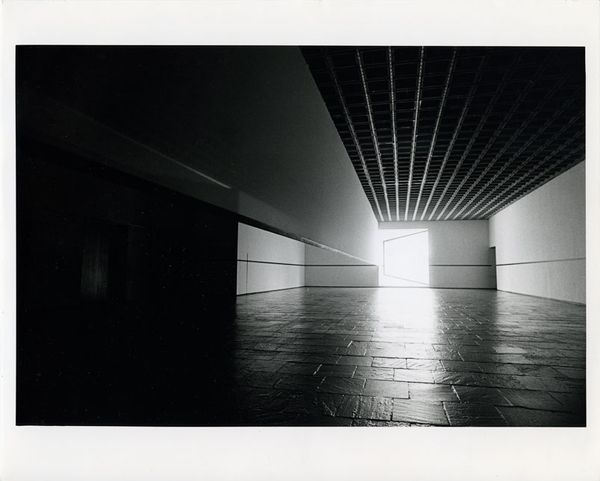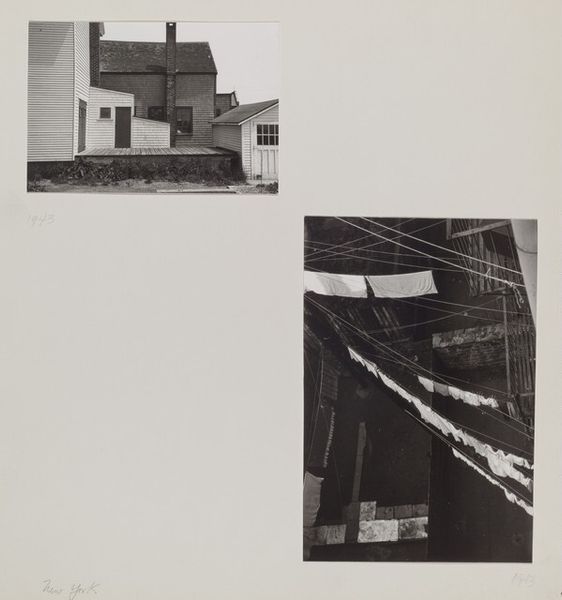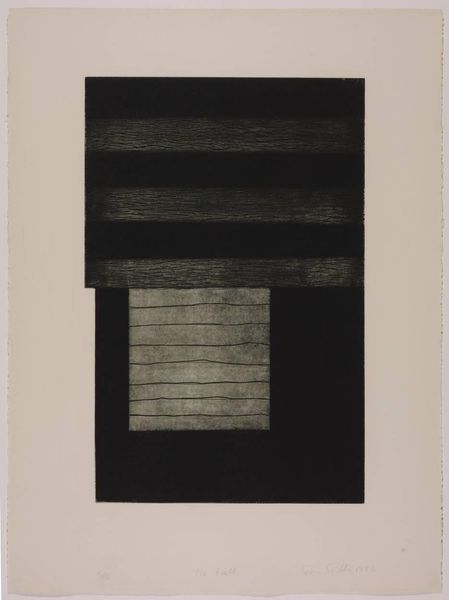
Dimensions: image: 224 x 167 mm
Copyright: CC-BY-NC-ND 4.0 DEED, Photo: Tate
Curator: Werner Mantz's "Communion Bench, Kreneheide 1935," currently held in the Tate Collections, presents us with a stark composition. What are your initial thoughts? Editor: It feels unsettlingly clinical, devoid of warmth, almost sterile in its precise arrangement of forms. Curator: Indeed. Mantz, with his meticulous eye, creates a powerful study of form and shadow. Consider the stark contrast between the light-colored railing and the dark, reflective bench surface. Editor: But what of the bench's function? In 1935, such architectural austerity could be seen as complicit with the rise of totalitarian regimes, stripping away individuality in favor of rigid order. Curator: A valid point. However, the play of light and shadow imbues the photograph with a subtle dynamism that complicates any singular interpretation. Editor: Still, I can't shake the feeling that this image, with its cold geometry, reflects a broader societal shift towards control and conformity. Curator: Perhaps. Mantz's photograph allows for multiple readings. It's in this tension between form and context that the work truly resonates. Editor: A chilling resonance, to be sure, prompting us to question the social implications of even the most seemingly benign aesthetic choices.
Comments
http://www.tate.org.uk/art/artworks/mantz-communion-bench-kreneheide-1935-p79949
Join the conversation
Join millions of artists and users on Artera today and experience the ultimate creative platform.
Communion Bench, Kreneheide 1935, printed 1977 depicts a portion of a curving stone banister at the foot of some highly polished black steps. The title of the photograph locates the scene in a church by indicating that the banister serves as a communion bench, which in turn implies that the steps lead to an altar. The elegant curve of the banister bridges the left-hand edge of the picture to the top, while the steps to the right of the composition parallel and continue this arc down towards the bottom right-hand corner. Mantz’s choice of shot is characterised by contrasts, between the rigidly square tiles of the floor and the graceful curve of the central elements, as well as between the pale, bulky columns of the banister and the dark sheen of the steps. However, a striking use of light and shadow smoothes these contrasts: the grooves in the columns exhibit shades of various tones, while their shadows on the floor ease the transition towards the dark steps on the right. This photograph reveals Mantz’s ability to frame architectural features as if they were props in a theatrical set.
